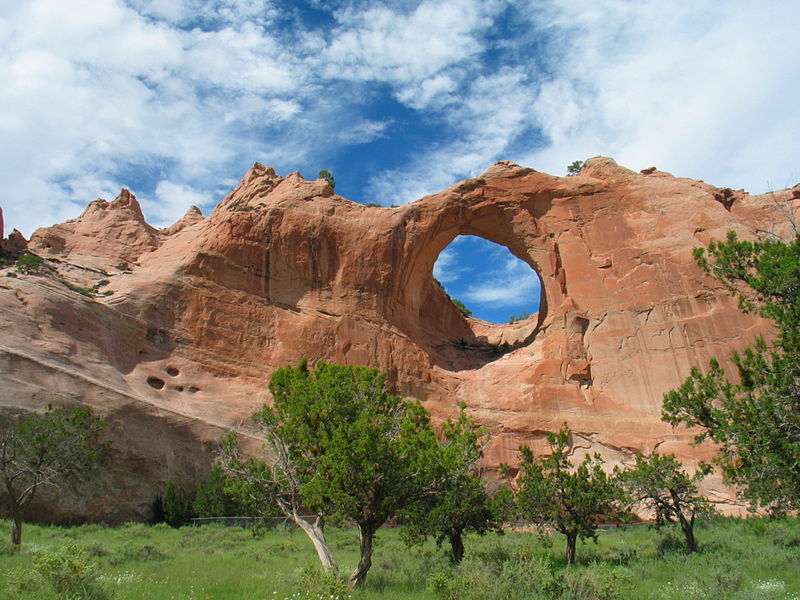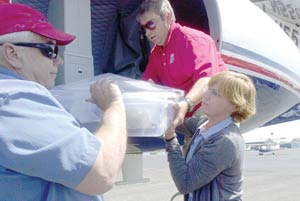12/06/2013
George McGraw The Huffington post
When most people think of dirty water, they think of places like rural Africa. But water poverty affects hundreds-of-thousands of Americans too.
One shocking example? Nearly 40 percent of the 173,000 Navajo in the U.S. don’t have a tap or a toilet at home. (For non-Native Americans, that number is just .6 percent).
Water poverty affects everything: health, education, personal security, economic growth. 44 percent of Navajo children live below the poverty line, twice the national average, held there by issues like water insecurity. But poverty isn’t the only problem here. Since these communities are just hours from major cities like Los Angeles and Albuquerque, poverty is linked to crime, depression and substance abuse.
Life without water in the U.S. doesn’t look very different from life in rural South Sudan. Every morning, thousands of Navajo men, women and children set out to find water. Many make the trip by car, which can be costly. Some can’t drive, forcing them to walk miles to livestock troughs contaminated with bacteria and even uranium.
Lindsey Johnson is one of the many Navajo elders facing water poverty. She lives with ten of her family members in a small trailer without electricity or running water in Smith Lake, New Mexico. Since she was a child, Mrs. Johnson has relied on neighbors’ taps, local ponds… even snow for every drop of water she uses. Now nearly 80 years old, her struggle to find clean water hasn’t changed much since she was a child.
Today, Mrs. Johnson and 250 other families within a 70-mile radius receive some water by truck. The lone water truck in Smith Lake is operated by St. Bonaventure — a Catholic mission — and it can’t reach every home. By the middle of the month, most families are forced to collect extra water from other (often unsafe) sources. The water that arrives is stored in buckets or barrels outside, prone to contamination in the summer and freezing in the winter.
This holiday season, DIGDEEP Water is partnering with St. Bonaventure to bring reliable clean water access to over 250 homes through the Navajo Water Project.
The community-led project includes a new 2000 ft. well and storage facility. For the first time ever, families will benefit from free, trucked water delivery in an amount that meets international human rights standards. The project will also provide emergency access to water on site.
When finished, the Navajo Water Project will provide every home with an elevated water tank and solar heating element, using gravity to feed sinks and toilets all year long. As with every DIGDEEP system, the project is community-led and unique to the people it serves. The active participation of families, Navajo Chapters and regulators will ensure its long-term sustainability.
DIGDEEP is the only international water organization operating here in the US, and the Navajo Access Project is just the first of its kind. We’re proud to empower communities like Mrs. Johnson’s to defend their human right to water. It’s a stark reminder to Americans everywhere that water poverty isn’t as far away as you think.
Visit navajowaterproject.org to join the fight for clean water here at home.








 DENVER, CO – A nationally known, nonprofit, public-interest law firm with decades of experience addressing constitutional and legal issues as to American Indians today urged the U.S. Court of Appeals for the Ninth Circuit to uphold the holding of an Arizona federal district court that a Navajo District Court has no jurisdiction over non-Indians in a civil lawsuit filed for allegedly tortious conduct on an Arizona highway. Mountain States Legal Foundation (MSLF), which had been urged to file a brief by the tribal court but whose arguments were rejected, urged the appeals court to uphold the federal district court’s ruling that the tribe lacks jurisdiction. In August 2012, the federal district court ruled that the Navajo tribal court has no jurisdiction over the non-Indians sued in the case. MSLF, which has been involved for decades in state and federal courts with regard to the authority of tribal courts over non-Indians and American Indians from other tribes, relied on U.S. Supreme Court and Ninth Circuit Court of Appeals rulings in arguing that the appellate court should uphold the lower court’s ruling.
DENVER, CO – A nationally known, nonprofit, public-interest law firm with decades of experience addressing constitutional and legal issues as to American Indians today urged the U.S. Court of Appeals for the Ninth Circuit to uphold the holding of an Arizona federal district court that a Navajo District Court has no jurisdiction over non-Indians in a civil lawsuit filed for allegedly tortious conduct on an Arizona highway. Mountain States Legal Foundation (MSLF), which had been urged to file a brief by the tribal court but whose arguments were rejected, urged the appeals court to uphold the federal district court’s ruling that the tribe lacks jurisdiction. In August 2012, the federal district court ruled that the Navajo tribal court has no jurisdiction over the non-Indians sued in the case. MSLF, which has been involved for decades in state and federal courts with regard to the authority of tribal courts over non-Indians and American Indians from other tribes, relied on U.S. Supreme Court and Ninth Circuit Court of Appeals rulings in arguing that the appellate court should uphold the lower court’s ruling.




